Home>Garden Essentials>Why Don’t Poor People Like Crop Rotation?
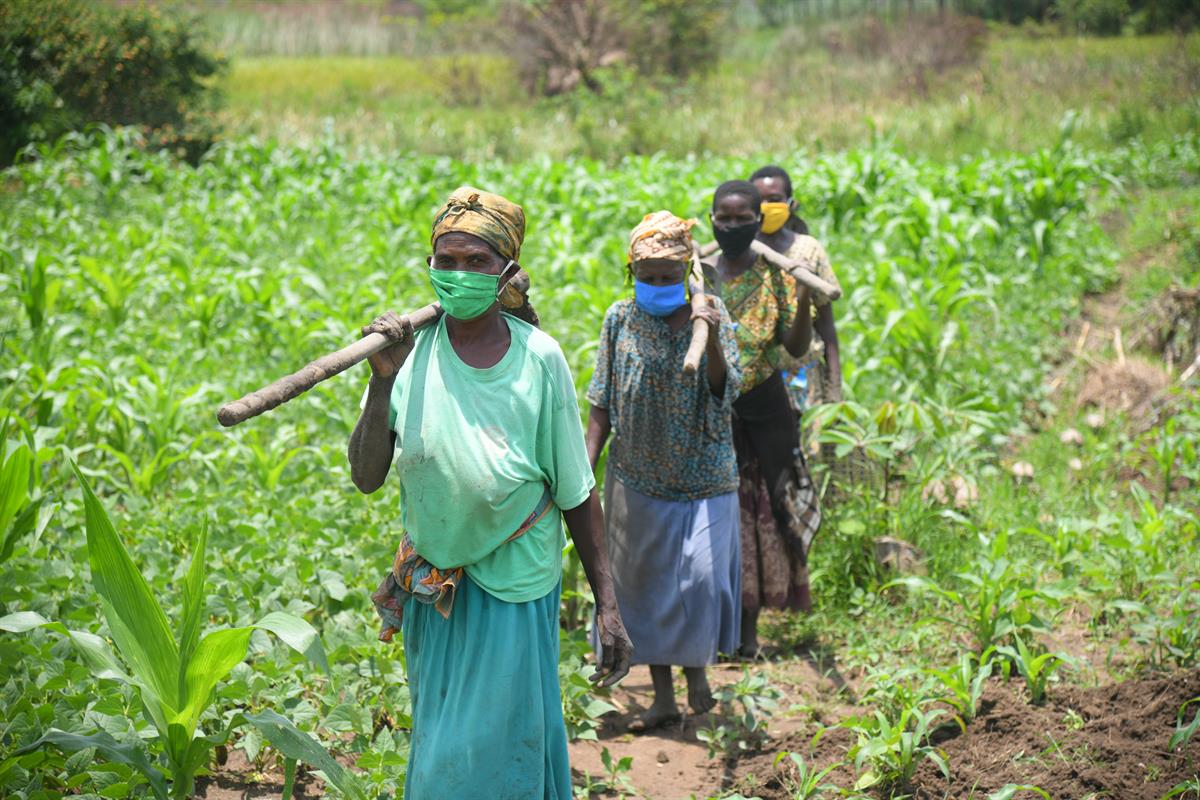

Garden Essentials
Why Don’t Poor People Like Crop Rotation?
Modified: March 16, 2024
Discover the importance of crop rotation in gardening and learn why it may be overlooked by those in poverty. Enhance your garden's productivity with this essential technique.
(Many of the links in this article redirect to a specific reviewed product. Your purchase of these products through affiliate links helps to generate commission for Storables.com, at no extra cost. Learn more)
Introduction
Crop rotation is the practice of growing different types of crops in a specific sequence on the same piece of land. It is an age-old agricultural technique that has been used for centuries to improve soil fertility, prevent pests and diseases, and optimize crop yields. However, despite its many benefits, crop rotation is not widely adopted by poor farmers. In this article, we will explore the reasons why crop rotation is not favored by those in poverty and the challenges they face in implementing this practice.
Crop rotation involves dividing a piece of land into different sections and cultivating different crops in each section over a period of time. The types of crops grown and the sequence in which they are planted are carefully planned to maximize yield and minimize the negative effects of pests and diseases. By rotating crops, farmers can break the life cycles of pest organisms and reduce the build-up of pathogens in the soil, leading to healthier crops and improved overall productivity.
While crop rotation offers numerous benefits, poor farmers often face significant challenges that hinder the adoption of this practice. One of the primary reasons is the lack of knowledge and education. Many impoverished farmers have limited access to formal education and agricultural training, which means they may not be aware of the potential benefits of crop rotation or how to implement it effectively.
Moreover, poor farmers typically have limited access to resources and technology. They may lack the financial means to invest in the necessary tools, equipment, and inputs required for successful crop rotation. Without access to quality seeds, fertilizers, and machinery, implementing crop rotation becomes a daunting task, especially when seeking to balance the immediate needs of feeding their families and generating income.
In addition, poor farmers often face challenges related to infrastructure and financial support. Inadequate rural roads, limited irrigation facilities, and a lack of storage and processing facilities make it difficult for farmers to effectively implement crop rotation and manage the associated logistics. Funding and credit accessibility are also major issues, as many impoverished farmers struggle to secure loans or government support to invest in sustainable farming practices like crop rotation.
Key Takeaways:
- Poor farmers face challenges in adopting crop rotation due to lack of knowledge, resources, and infrastructure. Education, financial support, and community engagement are crucial for overcoming these barriers.
- Government policies, awareness campaigns, and information dissemination are essential for promoting crop rotation among poor farmers. Collaboration and targeted interventions can empower farmers to benefit from this sustainable farming practice.
Read more: Why Is Crop Rotation Important?
Definition of Crop Rotation
Crop rotation is a farming technique that involves the systematic planting of different crops in sequential order on the same piece of land. It is a method used to manage the fertility of the soil, reduce the incidence of pests and diseases, and improve overall crop yield. The concept behind crop rotation is rooted in the belief that growing the same crop in the same location year after year is detrimental to the soil health and can lead to a decline in productivity.
The process of crop rotation typically involves dividing a field or plot of land into different sections or beds. Each section is then planted with a different crop in a specific sequence. The crops chosen for rotation are carefully selected based on their ability to complement each other and beneficially impact the soil. The sequence of crops varies depending on factors such as the climate, soil type, and specific goals of the farmer.
There are several principles and guidelines that farmers follow when implementing crop rotation. These include alternating between crops from different plant families to minimize the build-up of pests and diseases associated with specific crops. For example, rotating between legumes, such as beans or peas, and grains, like corn or wheat, helps break the life cycles of pests and pathogens that target a particular crop family.
In addition to family rotation, farmers may also consider factors such as nutrient requirements and root systems when selecting crops for rotation. Some crops are known as nitrogen fixers, which means they have the ability to convert atmospheric nitrogen into a form that plants can utilize. These nitrogen-fixing crops, like soybeans or clover, are often included in rotation plans to replenish the soil with essential nutrients.
Crop rotation offers numerous benefits for both the soil and the crops. It helps improve soil structure and fertility by reducing soil erosion, enhancing nutrient availability, and increasing organic matter content. This, in turn, leads to healthier plants with improved resistance to pests and diseases. Crop rotation also contributes to sustainable farming practices by reducing the need for chemical fertilizers, pesticides, and herbicides.
Overall, crop rotation is a valuable technique that farmers can use to maintain soil health, protect the environment, and optimize crop production. However, its successful implementation requires careful planning, knowledge of crop compatibility, and access to the necessary resources and support.
Benefits of Crop Rotation
Crop rotation offers a multitude of benefits to farmers and the environment. By implementing this practice, farmers can improve soil fertility, manage pests and diseases more effectively, and optimize crop yields. Let’s explore some of the key advantages of crop rotation:
- Enhanced Soil Fertility: One of the primary benefits of crop rotation is its ability to naturally enhance soil fertility. Different crops have different nutrient requirements, and by rotating crops with varying nutrient demands, farmers can maintain a balanced nutrient cycle in the soil. This helps prevent nutrient depletion and ensures that the soil remains fertile and productive.
- Pest and Disease Management: Crop rotation plays a crucial role in minimizing the incidence of pests and diseases. By alternating the types of crops grown in a specific field, farmers interrupt the life cycles of pests and reduce the build-up of pathogens in the soil. This reduces the need for chemical pesticides and promotes healthier, more resilient crops.
- Weed Control: Another benefit of crop rotation is its impact on weed control. Different crops utilize different nutrients and occupy space differently. By alternating crops, farmers create an environment that is unfavorable for the growth of specific weed species. This helps to naturally suppress weed populations and reduces the reliance on herbicides.
- Soil Erosion Prevention: Crop rotation can also help prevent soil erosion. Different crops have varying root structures and growth habits. Some crops, like legumes, have deep-rooted systems that help anchor the soil and prevent erosion. By incorporating these crops into the rotation plan, farmers can minimize soil erosion and preserve the integrity of their land.
- Increased Biodiversity: Crop rotation promotes biodiversity on the farm. By diversifying the crops grown, farmers provide habitat and food sources for a wide range of beneficial insects, birds, and other wildlife. This creates a more balanced ecosystem and helps maintain a natural balance between pests and their natural predators.
In addition to these ecological benefits, crop rotation can also lead to improved crop yields and profitability. By optimizing soil fertility, reducing the impact of pests and diseases, and promoting weed control, farmers can achieve higher and more sustainable crop yields. This, in turn, can contribute to increased income and food security for farming communities.
Overall, crop rotation is a valuable practice that offers a range of benefits for farmers, the environment, and society as a whole. By implementing this technique, farmers can cultivate healthy soils, protect natural resources, and ensure long-term agricultural sustainability.
Challenges Faced by Poor Farmers
Poor farmers face a multitude of challenges that hinder their ability to implement and benefit from crop rotation. These challenges are often rooted in factors such as limited access to resources, lack of knowledge and education, and inadequate infrastructure and financial support. Let’s delve into some of the key challenges faced by poor farmers in relation to crop rotation:
- Lack of Knowledge and Education: Many impoverished farmers have limited access to formal education and agricultural training. As a result, they may not be aware of the potential benefits of crop rotation or how to effectively implement this practice. A lack of knowledge about crop rotation techniques and proper crop selection can hinder their ability to adopt this method.
- Limited Access to Resources and Technology: Poor farmers often struggle to access the resources and technology necessary for successful crop rotation. The financial constraints these farmers face make it difficult to invest in tools, equipment, and inputs required for effective implementation. Access to quality seeds, fertilizers, machinery, and other inputs is often limited, further hindering their ability to adopt and benefit from crop rotation.
- Lack of Infrastructure and Financial Support: Inadequate infrastructure and financial support pose significant challenges for poor farmers. Many impoverished regions lack proper rural roads, irrigation facilities, storage, and processing facilities, making it challenging to implement crop rotation and manage the associated logistics. Furthermore, access to funding and credit is often limited or unavailable, making it difficult for farmers to invest in sustainable practices, including crop rotation.
- Cultural and Traditional Factors: Cultural and traditional practices can also pose challenges to the adoption of crop rotation. Traditional farming methods and beliefs handed down through generations may discourage farmers from deviating from the familiar ways of cultivation. Convincing farmers to adopt new practices like crop rotation can be challenging due to deeply ingrained cultural norms and beliefs about farming techniques.
- Government Policies and Interventions: Government policies and interventions, or the lack thereof, can significantly impact the ability of poor farmers to adopt crop rotation. Insufficient support, inadequate agricultural policies, and the absence of agricultural extension services can hinder knowledge dissemination and restrict farmers’ access to necessary resources and technology required for successful implementation.
- Lack of Awareness and Information Dissemination: Poor farmers often lack awareness and information about the benefits and techniques of crop rotation. Limited access to agricultural extension services, training programs, and information platforms contribute to the lack of awareness about sustainable farming practices. The dissemination of information on the advantages and proper implementation of crop rotation is crucial for the adoption of this technique.
These challenges collectively contribute to the reluctance of poor farmers to adopt and benefit from crop rotation. Addressing these challenges requires targeted interventions and support that focus on providing access to knowledge, resources, technology, funding, and infrastructure. By overcoming these obstacles, poor farmers can unlock the potential benefits of crop rotation and improve their agricultural productivity and livelihoods.
Lack of Knowledge and Education
A significant challenge faced by poor farmers when it comes to implementing crop rotation is the lack of knowledge and education. Many impoverished farmers have limited access to formal education and agricultural training, which affects their awareness and understanding of the potential benefits of crop rotation and how to effectively implement this practice.
Education plays a crucial role in empowering farmers with the necessary skills and knowledge to make informed decisions about their farming practices. Unfortunately, poor farmers often lack access to educational opportunities, agricultural extension services, and training programs that could equip them with the knowledge and techniques required for successful crop rotation.
The lack of knowledge about crop rotation presents several barriers for poor farmers. Firstly, they may be unaware of the potential benefits this practice offers in terms of soil fertility improvement, pest and disease management, and overall crop yield optimization. Without understanding these advantages, farmers may not recognize the value of implementing crop rotation on their farmland.
Additionally, poor farmers may not possess the necessary understanding of crop selection, rotational sequences, and appropriate timing for crop rotation. These aspects are critical in ensuring the effectiveness of crop rotation and maximizing its benefits. Without access to this knowledge, poor farmers may struggle to determine which crops are most suitable for rotation or how to plan a rotation schedule that meets their specific farming objectives.
The lack of knowledge and education also affects poor farmers’ ability to overcome challenges and adapt to changing environmental conditions. Crop rotation requires a deeper understanding of the relationship between crops, soil, pests, and diseases. It involves considering factors such as nutrient requirements, crop compatibility, and the impact on soil structure. Without this knowledge, farmers may have difficulty making informed decisions about crop selection and the design of effective crop rotation plans.
To address the issue of lack of knowledge and education, it is essential to provide access to agricultural training programs and extension services targeted specifically at poor farmers. These programs can help educate farmers about the benefits of crop rotation, provide guidance on crop selection and rotation sequences, and offer practical training on implementing crop rotation techniques.
In addition, awareness campaigns, workshops, and farmer-to-farmer knowledge sharing initiatives can play a vital role in disseminating information about crop rotation. These efforts can help bridge the knowledge gap and empower poor farmers with the understanding and skills needed to adopt and successfully implement this sustainable farming practice.
By addressing the lack of knowledge and education, poor farmers can gain confidence in adopting crop rotation and leverage its benefits to improve soil health, manage pests and diseases, and increase their overall agricultural productivity and sustainability.
Read more: Why Crop Rotation Is Important
Limited Access to Resources and Technology
Another significant challenge faced by poor farmers when it comes to implementing crop rotation is limited access to resources and technology. The financial constraints these farmers often face make it difficult to invest in the tools, equipment, and inputs required for successful crop rotation.
Implementing crop rotation effectively requires access to various resources, including quality seeds, fertilizers, machinery, and irrigation systems. However, poor farmers may struggle to obtain these resources due to their limited financial means. The high cost of inputs and lack of access to credit make it challenging for them to invest in the necessary resources for crop rotation.
Poor farmers often rely on traditional farming methods and may not have the financial capacity to purchase modern farming equipment and technologies. Advanced tools such as tractors, tillers, or irrigation systems can greatly enhance the efficiency and effectiveness of crop rotation. However, the cost of acquiring and maintaining such equipment is often beyond the reach of poor farmers.
Access to quality seeds is also a crucial component of successful crop rotation. Poor farmers may not have the financial means to purchase improved and disease-resistant seeds, limiting their ability to optimize their yields and manage pests and diseases effectively. Additionally, poor farmers may face challenges accessing fertilizers and other soil inputs necessary for maintaining soil fertility, further hindering the successful implementation of crop rotation.
Limited access to technology is another barrier faced by poor farmers. Technological advancements in agriculture, such as precision farming tools, remote sensing technology, and agricultural apps, can provide valuable insights and guidance for effective crop rotation. However, poor farmers may lack the resources and knowledge to leverage these technologies to their advantage.
To address the challenge of limited access to resources and technology, various interventions can be implemented. Governments and non-governmental organizations can provide financial support in the form of subsidies or incentives to make agricultural inputs more affordable for poor farmers. This can help them access quality seeds, fertilizers, and machinery required for implementing crop rotation.
Training and capacity building programs can also be organized to educate poor farmers on low-cost or alternative methods of acquiring essential resources and technologies. For example, community-based seed banks can be established to provide access to high-quality seeds at affordable prices, enabling farmers to access diverse and improved seed varieties suitable for crop rotation.
Furthermore, collaboration between farmers, agricultural experts, and research institutions can help develop and promote affordable and sustainable farming technologies that are specifically tailored to the needs and resources of poor farmers. Simple and low-cost innovations, such as drip irrigation systems or manual hand tools, can be designed and disseminated to enable farmers to implement crop rotation effectively.
By addressing the limited access to resources and technology, poor farmers can overcome one of the major barriers to implementing crop rotation and unlock its potential benefits for soil health, pest management, and increased agricultural productivity.
Crop rotation can help poor people by improving soil fertility, reducing the need for expensive fertilizers, and increasing crop yields. It’s a sustainable and cost-effective way to improve agricultural productivity.
Lack of Infrastructure and Financial Support
Lack of infrastructure and financial support is a significant challenge faced by poor farmers when it comes to implementing crop rotation. Inadequate rural infrastructure and limited financial resources can hinder their ability to effectively adopt and benefit from this sustainable farming practice.
Infrastructure plays a crucial role in supporting agricultural activities, including crop rotation. However, many impoverished regions lack proper rural roads, irrigation facilities, storage, and processing facilities. This lack of infrastructure creates logistical challenges and hampers the implementation of crop rotation. Poor farmers may face difficulties in accessing their farmland, transporting crops to the market, or finding suitable storage options for harvested produce.
Inadequate irrigation facilities pose another challenge. Access to reliable water sources and irrigation systems is vital for successful crop rotation, especially in areas with seasonal rainfall or limited access to water. Without proper irrigation infrastructure, poor farmers may struggle to provide the necessary moisture to crops during critical growth stages, impacting their ability to implement crop rotation effectively.
Additionally, limited financial support further exacerbates the challenges faced by poor farmers. Many impoverished farmers lack the necessary financial resources to invest in sustainable farming practices, including crop rotation. They often lack access to credit or face high interest rates, making it difficult to secure loans for purchasing necessary inputs, machinery, or infrastructure required for effective crop rotation.
Limited financial resources also have an impact on the overall planning and management of crop rotation. Poor farmers may find it challenging to allocate funds for purchasing quality seeds, fertilizers, or other inputs required for each crop in the rotation sequence. This can lead to suboptimal crop selection or the use of low-quality inputs, compromising the potential benefits of crop rotation.
To address the challenges of lack of infrastructure and financial support, concerted efforts are needed at various levels. Governments and development agencies can focus on improving rural infrastructure such as building roads, irrigation systems, storage facilities, and processing units. This would enhance the accessibility and efficiency of implementing crop rotation for poor farmers.
Financial institutions can play a crucial role by providing affordable credit and financial services tailored to the needs of poor farmers. Governments can also explore subsidies or grants to support the adoption of sustainable farming practices like crop rotation. Such financial support can help alleviate the burden on poor farmers and enable them to invest in the necessary resources and infrastructure required for successful crop rotation.
Furthermore, capacity building and training programs can be organized to empower poor farmers with financial literacy and management skills. This would enable them to make informed decisions about financial planning, budgeting, and accessing various financial services.
Public-private partnerships and collaborations between different stakeholders can also contribute to addressing the challenges of lack of infrastructure and financial support. By working together, diverse resources and expertise can be pooled to develop innovative solutions and provide the necessary support to empower poor farmers in implementing crop rotation effectively.
Overall, addressing the lack of infrastructure and financial support is crucial for facilitating the adoption of crop rotation by poor farmers. By improving infrastructure and providing financial assistance, we can create an enabling environment that empowers farmers and enhances their ability to benefit from this sustainable agricultural practice.
Cultural and Traditional Factors
Cultural and traditional factors can pose significant challenges to the adoption of crop rotation among poor farmers. Deeply ingrained beliefs, customs, and traditional farming practices can influence their attitudes towards new farming techniques, including crop rotation.
Traditional farming methods have often been passed down through generations, forming an integral part of the cultural fabric of farming communities. These practices may have been successful in the past, leading farmers to be resistant to change and reluctant to adopt new methods such as crop rotation.
In some cultures, there may be superstitions or taboos associated with changing farming practices. Farmers may believe that altering their traditional way of cultivating the land will bring bad luck or harm their crops. Such cultural beliefs can create resistance to adopting crop rotation, as farmers fear the potential consequences of deviating from their customary farming practices.
Cultural norms and traditions can also prioritize immediate survival needs over long-term sustainability. Poor farmers often face daily challenges of feeding their families and generating income. They may be more focused on maximizing short-term yields rather than investing time and resources in implementing crop rotation, which is perceived as a longer-term strategy for improving livelihoods.
Furthermore, the lack of awareness and knowledge about the benefits of crop rotation within farming communities contributes to the perpetuation of traditional practices. If farmers are not aware of the advantages of crop rotation or how it can enhance productivity and sustainability, they are less likely to consider adopting this technique.
To address the cultural and traditional factors hindering the adoption of crop rotation, it is crucial to involve the farming communities themselves. Engaging with farmers and understanding their cultural practices, beliefs, and concerns is key to developing effective strategies for promoting crop rotation.
Education and awareness campaigns can play a significant role in addressing cultural barriers. Informing farmers about the benefits of crop rotation, sharing success stories from other farmers who have adopted the practice, and conducting field demonstrations can help dispel misconceptions and build confidence in trying something new.
Engaging local community leaders, elders, and respected individuals can also be instrumental in driving change. If influential members of the community support and advocate for the adoption of crop rotation, it can help overcome cultural resistance and create a conducive environment for its implementation.
Incorporating traditional knowledge and practices that align with the principles of crop rotation can also be effective. Emphasizing the compatibility of crop rotation with existing cultural practices and demonstrating how it can build upon the wisdom of previous generations can help alleviate concerns and foster acceptance among farmers.
Overall, addressing cultural and traditional factors requires a culturally sensitive and community-driven approach. By working closely with farmers, respecting their cultural values, and providing the necessary education and awareness, it is possible to overcome these barriers and promote the adoption of crop rotation among poor farming communities.
Government Policies and Interventions
Government policies and interventions play a crucial role in facilitating the adoption of crop rotation among poor farmers. Enabling and supportive policies can provide the necessary framework and incentives to promote sustainable farming practices, including crop rotation.
One key area where government policies can make a significant impact is in providing financial support and incentives to encourage farmers to adopt crop rotation. Subsidies or grants for purchasing quality seeds, fertilizers, machinery, and other inputs required for crop rotation can alleviate the financial burden on poor farmers and make this practice more accessible.
Government intervention can also help address the lack of credit availability for poor farmers. Establishing credit schemes specifically targeted at small-scale farmers can provide affordable loans and financial assistance for investing in crop rotation techniques and resources. Additionally, government-backed insurance programs can safeguard farmers against potential losses due to factors beyond their control, such as adverse weather conditions or crop failure.
Another crucial aspect of government intervention is the provision of extension services and agricultural training programs. Extension officers can work closely with farmers to provide knowledge and guidance on the benefits and techniques of crop rotation. They can assist in developing personalized crop rotation plans and offer ongoing support and advice to help farmers successfully implement this practice.
Government policies can also focus on improving access to agricultural inputs and infrastructure necessary for crop rotation. Establishing seed banks that provide quality and diverse seeds at affordable prices can enhance farmer’s access to suitable crops for rotation. Investments in rural infrastructure, such as irrigation systems, storage facilities, and farmer cooperatives, can facilitate the logistics of implementing crop rotation and ensure farmers have the necessary support for successful implementation.
Furthermore, government policies can facilitate knowledge dissemination and awareness campaigns targeted at farmers. Information on the benefits of crop rotation, successful case studies, and practical guidelines can be shared through workshops, farmer field schools, and digital platforms. Government-funded research and development programs can focus on developing region-specific crop rotation plans and techniques tailored to the needs and challenges of poor farmers.
Above all, policymakers need to incorporate sustainability principles into agriculture policies. Encouraging and incentivizing sustainable farming practices, including crop rotation, can help protect the environment, improve soil health, and enhance agricultural productivity in the long term. Policies that promote organic farming, agroforestry, and biodiversity conservation can further complement the benefits of crop rotation.
Overall, government policies and interventions play a vital role in creating an enabling environment for the adoption of crop rotation among poor farmers. By implementing supportive policies, providing financial assistance and training, and improving access to necessary resources and infrastructure, governments can empower farmers and promote sustainable agricultural practices that lead to improved livelihoods and environmental sustainability.
Lack of Awareness and Information Dissemination
Lack of awareness and information dissemination is a significant challenge that hinders the adoption of crop rotation among poor farmers. Many impoverished farmers have limited access to agricultural extension services, training programs, and information platforms that could provide them with the necessary knowledge and understanding of crop rotation.
One of the primary barriers is the lack of awareness about the potential benefits of crop rotation. Poor farmers may not be aware of how implementing crop rotation can improve soil fertility, enhance pest and disease management, and increase overall agricultural productivity. Without this awareness, they may not recognize the value and importance of incorporating crop rotation into their farming practices.
Furthermore, poor farmers may lack information about the proper techniques and practices involved in crop rotation. They may not be familiar with crop selection, rotational sequences, or the appropriate timing for implementing crop rotation. This lack of knowledge and understanding can hinder their ability to effectively plan and implement crop rotation on their farms.
Additionally, poor farmers may not have access to information platforms and channels that could provide them with relevant and timely information about crop rotation. Limited access to the internet, low literacy rates, and language barriers can further exacerbate this issue. The lack of information dissemination prevents farmers from accessing the latest research, guidelines, and success stories related to crop rotation.
To address the lack of awareness and information dissemination, targeted efforts are needed to reach out to poor farmers and provide them with the necessary knowledge and resources. Agricultural extension services can play a pivotal role in disseminating information about crop rotation directly to farmers in a language and format they can understand.
Workshops, field demonstrations, and farmer field schools can be organized to provide hands-on training and practical knowledge about crop rotation. These interactive and participatory learning sessions can help build awareness, clarify misconceptions, and enhance farmers’ understanding of the benefits and techniques of crop rotation.
Utilizing local community leaders and respected individuals can also be an effective strategy. These individuals can serve as information sources and advocates within their communities, spreading knowledge about crop rotation and encouraging its adoption among their fellow farmers.
Collaboration with local NGOs and community-based organizations can further amplify the dissemination of information about crop rotation. These organizations can develop tailored campaigns, training programs, and information materials in local languages and formats that are accessible to poor farmers.
Digital platforms can also play a significant role in disseminating information about crop rotation. Mobile apps, SMS-based services, and radio programs can be utilized to reach out to farmers with relevant and practical information, even in remote areas with limited internet access.
Public-private partnerships can support the development and dissemination of information through joint initiatives between the government, research institutions, and agribusinesses. These collaborations can leverage the expertise and resources of each partner to develop informative materials, conduct awareness campaigns, and establish knowledge-sharing networks.
Overall, addressing the lack of awareness and information dissemination requires a multi-faceted approach. By providing targeted awareness campaigns, training programs, and utilizing various information platforms, it is possible to bridge the information gap and empower poor farmers with the knowledge and resources needed to adopt and benefit from crop rotation.
Conclusion
Crop rotation is a valuable agricultural practice that offers numerous benefits, including enhanced soil fertility, improved pest and disease management, and optimized crop yields. However, its adoption among poor farmers faces several challenges.
Poor farmers often lack the necessary knowledge and education to understand the potential benefits of crop rotation and implement it effectively. Limited access to resources and technology further impedes their ability to adopt this practice. Inadequate infrastructure and financial support present additional obstacles, as do cultural and traditional factors that influence farmers’ attitudes towards new farming techniques. Government policies and interventions, as well as the dissemination of awareness and information, also play critical roles in addressing these challenges.
To overcome these barriers and promote the adoption of crop rotation among poor farmers, a multi-faceted approach is needed. Providing access to education and training programs can empower farmers with the knowledge and skills necessary for successful implementation. Improving access to resources and technology, as well as infrastructure and financial support, can alleviate the financial burden and logistical challenges faced by poor farmers.
Cultural barriers can be navigated by engaging with farming communities, incorporating traditional knowledge, and raising awareness about the compatibility of crop rotation with existing cultural practices. Government policies can support the adoption of crop rotation through subsidies, credit schemes, extension services, and research and development initiatives.
Furthermore, addressing the lack of awareness and information dissemination is crucial. Capacity building programs, community outreach, and the use of digital platforms can help bridge the information gap and provide farmers with the necessary knowledge and guidance on crop rotation.
Overall, by addressing these challenges and implementing supportive strategies at various levels, crop rotation can become more accessible and beneficial to poor farmers. The adoption of this sustainable farming practice can lead to improved soil health, better pest and disease management, increased crop yields, and enhanced livelihoods for farming communities.
It is imperative that all stakeholders, including governments, NGOs, research institutions, and the farming communities themselves, work together to overcome these challenges and promote the widespread adoption of crop rotation among poor farmers. Through concerted efforts, we can ensure the sustainable and equitable development of agricultural practices, contributing to food security, environmental conservation, and poverty alleviation.
Frequently Asked Questions about Why Don't Poor People Like Crop Rotation?
Was this page helpful?
At Storables.com, we guarantee accurate and reliable information. Our content, validated by Expert Board Contributors, is crafted following stringent Editorial Policies. We're committed to providing you with well-researched, expert-backed insights for all your informational needs.
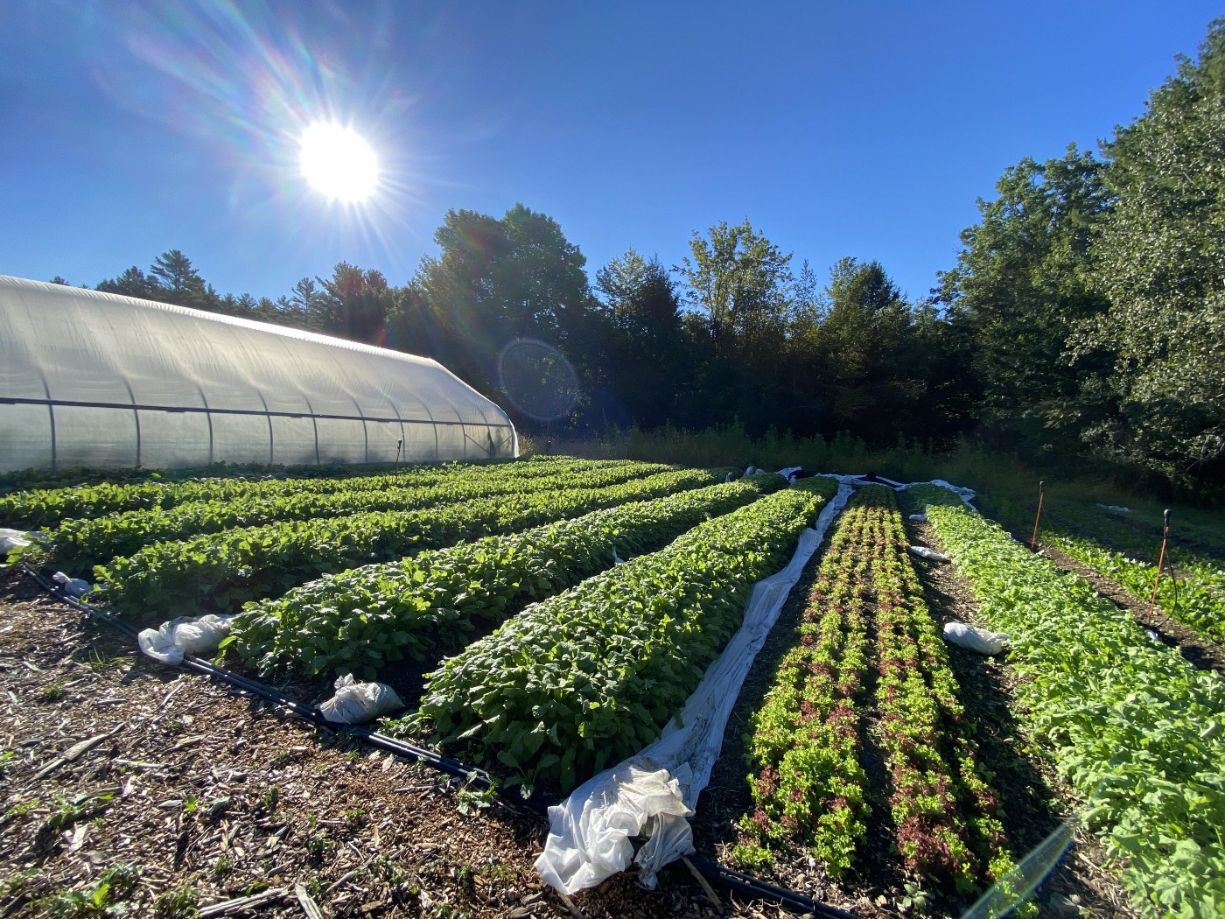
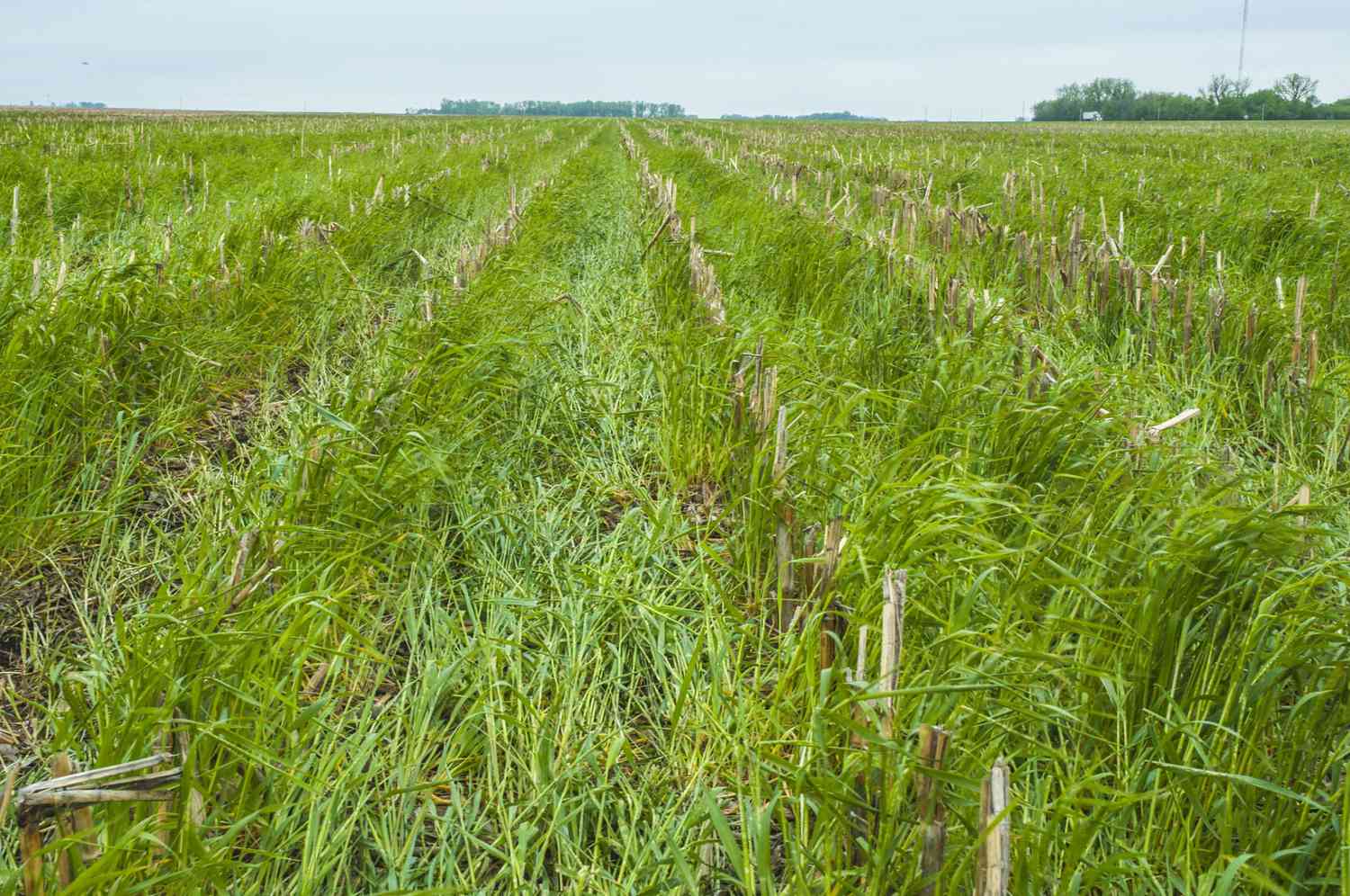

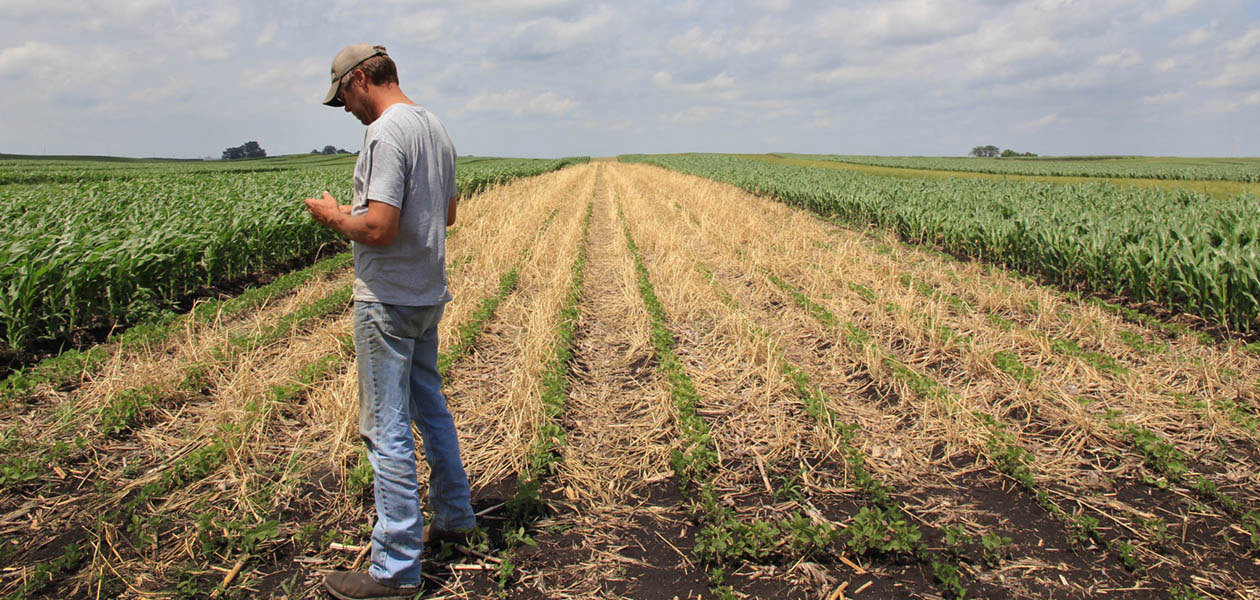
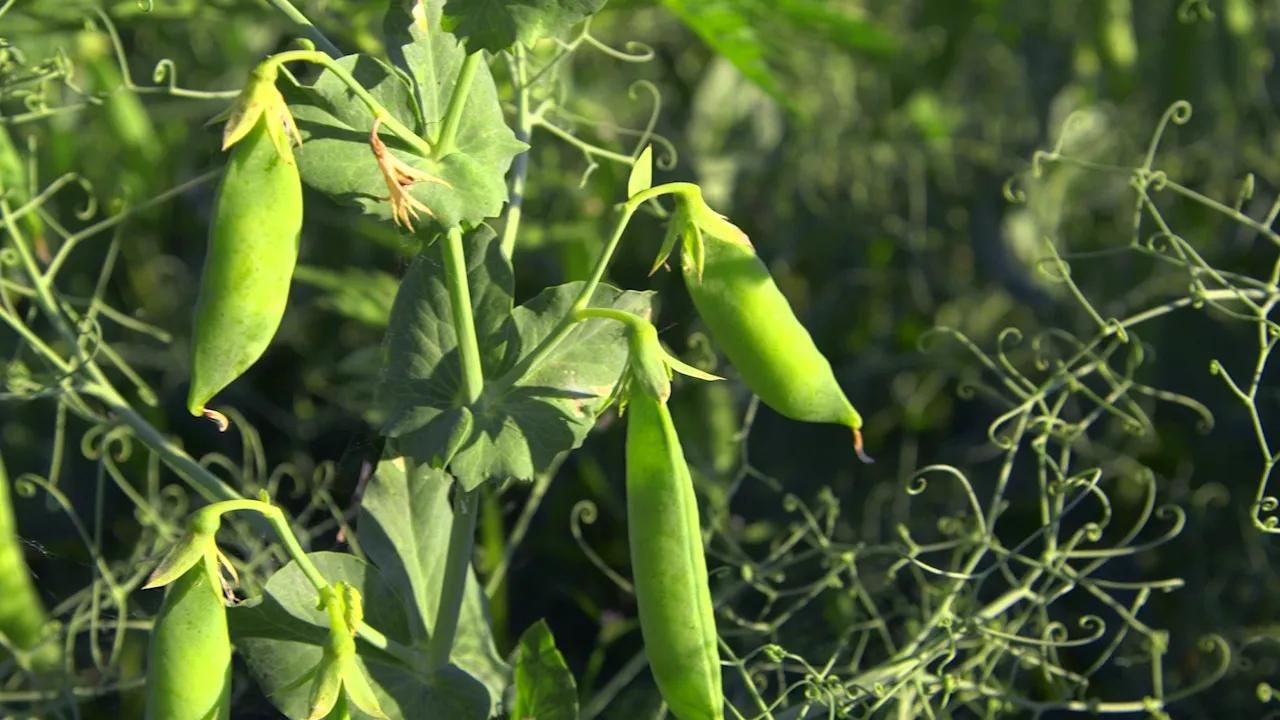
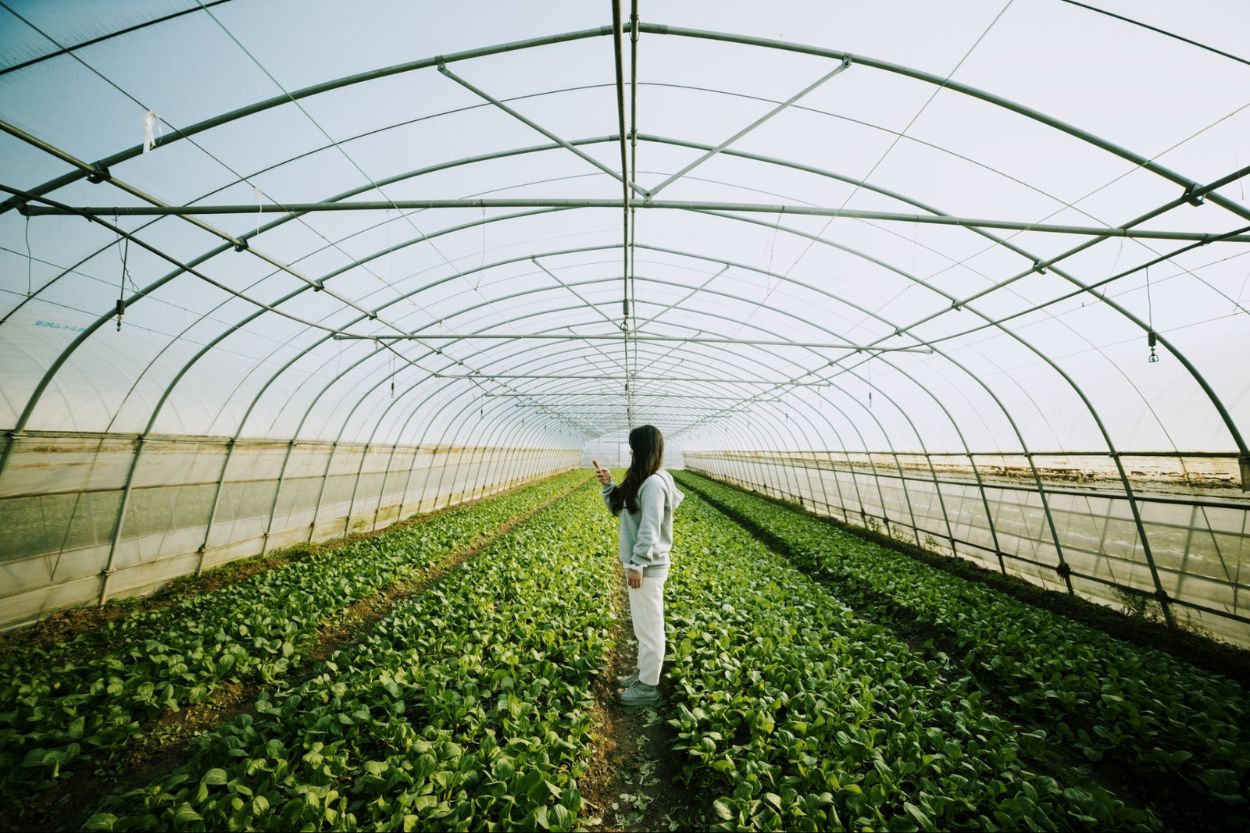








0 thoughts on “Why Don’t Poor People Like Crop Rotation?”